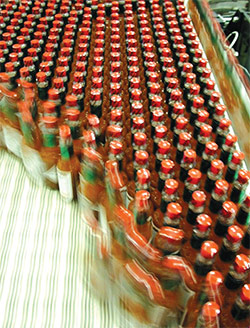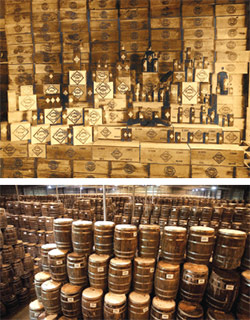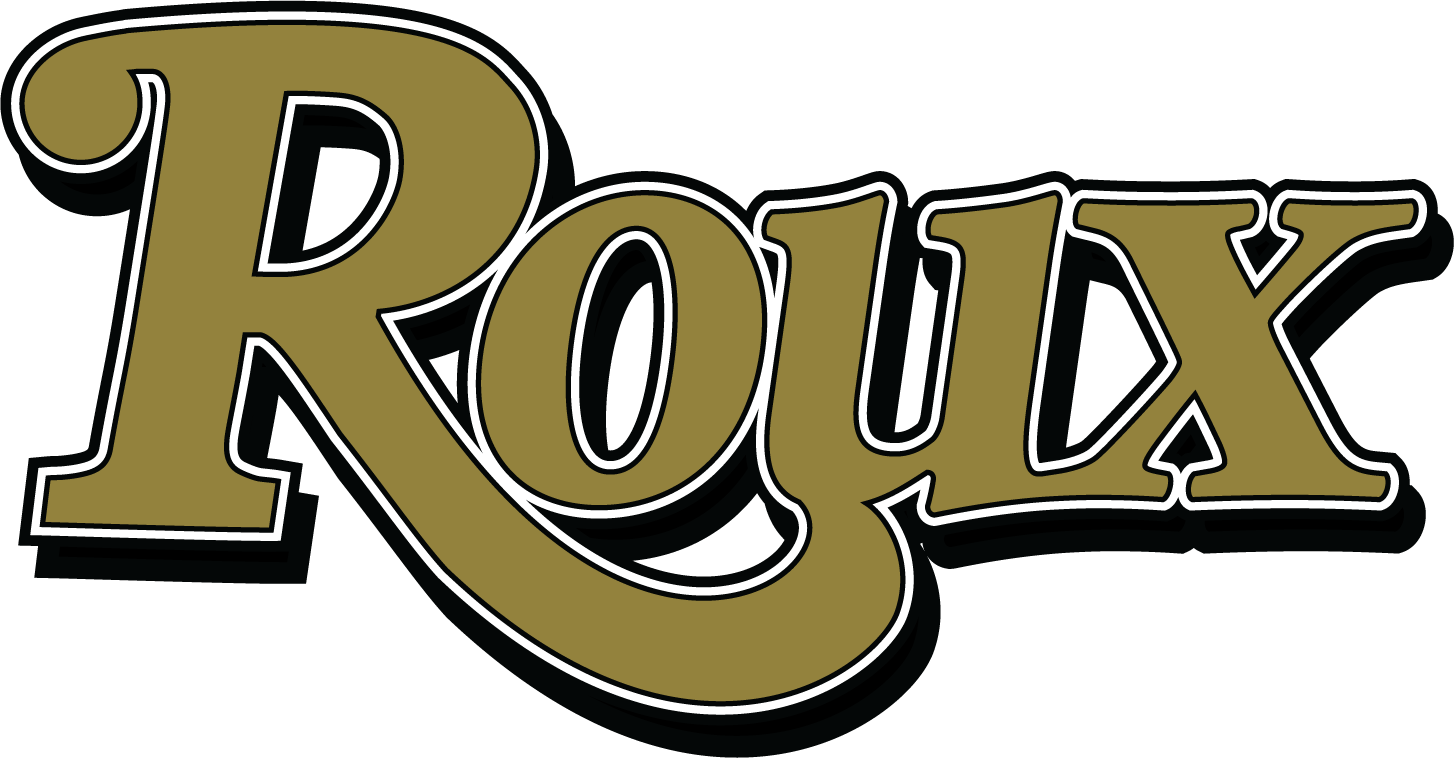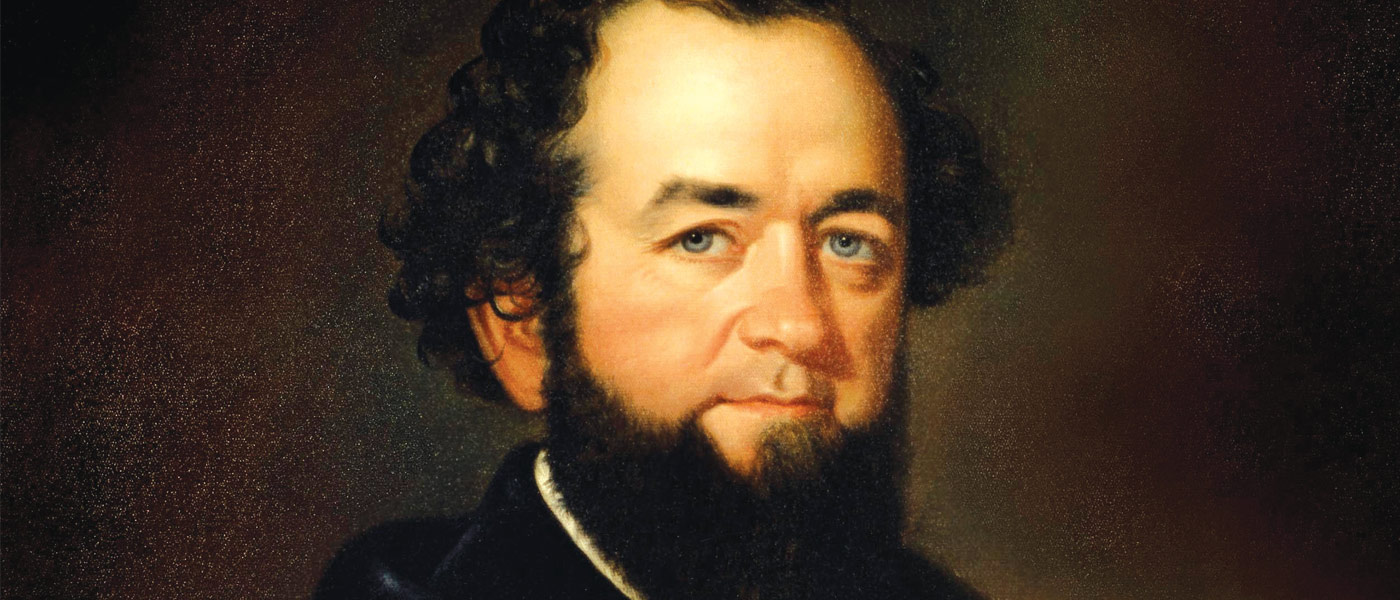“Today, we produce about 750,000 bottles a day.” The speed with which the company historian tossed out that number is proof that Shane Bernard knows his Tabasco … past and present. “And that’s the red sauce, the classic red Tabasco sauce.” But the red sauce’s origins came, not from a farmer, not from a chef, but rather from a banker from the eastern United States.
“Edmund McIlhenny was born in Maryland, came to Louisiana in 1840 as a bookkeeper and, based in New Orleans, soon became an independent banker who bought five branches of the Bank of Louisiana,” says Bernard. “He had a very puritanical work ethic, woke up before dawn every day and was a very kind, thoughtful man even though he was quite successful in the financial world.”
In June of 1859, McIlhenny married Mary Eliza Avery, a union that would play a key role in the start of an empire. But I digress, because starting an empire wasn’t part of the plan — the impetus was love, and the goal was starting a family. Cue a life-changing event that changed the course of history in the United States: The Civil War.
McIlhenny fled with his in-laws to Texas and worked for a time as a civilian employee for the Confederacy. When the “War Between the States” ended in 1865 however, there was no returning to his banking career. The Southern economy had been decimated and was left in shambles, offering few opportunities for a 50 year-old businessman. Edmund McIlhenny was left completely dependent on the Avery family and living at the place that bore their name, Avery Island.
“After the Civil War, the area was ruined and neglected in many areas up and down Teche, then came flood, blights, pests, yellow fever. It was not a good time in the area,” explains Bernard. Avery Island had been a sugar plantation, and when the sugar price fell, it was hard on everyone. “When things got more and more desperate, Edmund was looking for something to do, some way to help out, to put something on the family table,” explains Bernard, “He started tending the family garden, and one day he had this weird idea.”
 “Why don’t I make a pepper sauce and sell it?” To be accurate, admits Bernard, McIlhenny’s initial goal was, in some small way, to somehow be part of the solution in keeping the family going. “Peppers with salt and vinegar. But since they won’t preserve as a whole, it needs to be mashed, and that was really the recipe. Mashed peppers, salt and vinegar.”
“Why don’t I make a pepper sauce and sell it?” To be accurate, admits Bernard, McIlhenny’s initial goal was, in some small way, to somehow be part of the solution in keeping the family going. “Peppers with salt and vinegar. But since they won’t preserve as a whole, it needs to be mashed, and that was really the recipe. Mashed peppers, salt and vinegar.”
Then came an idea to take his concoction, his pepper sauce, out to the public. The sauce was made available to a few grocers in New Orleans, Galveston and New Iberia, “… and it kind of spread from there.” Interesting sidenote: McIhenny also sold the product at a few pharmacies, too.
“I’m not sure why he sold it here,” ponders Bernard. “We do know that one Opelousas pharmacist advertised the sauce as an ‘aperient’ or laxative. We have nothing in our archives to suggest why, and apparently the pharmacist made that claim all on his own.”
Now, about the name Tabasco … “The first reference Edmund ever made in any correspondence about a sauce came in 1868,” says Bernard. “The company actually dates it from January of that year with Edmund already calling it ‘Tabasco Sauce.’”
Now, there was a hot minute, or a few months’ worth of time actually, that McIlhenny called it Petite Anse Sauce (meaning “little cove,” thus naming it after Avery Island). “But his father-in-law didn’t like the sauce being named after the island. So Edmund changed it back to Tabasco after just a few months, and it’s been that ever since.” That still doesn’t explain why McIlhenny called his product Tabasco, and Bernard doesn’t have a hard-and-clear answer, only a bit of conjecture and possibilities.
“Tabasco was the name of both a state and town in Mexico, and there was a lot of trade involving lots of spice coming through the Port of New Orleans. I think Edmund knew people who already associated the name with spice, so that may be why he picked that as the name.”
 Let’s jump back to the aforementioned health claims, made by the Opelousas pharmacist in Tabasco’s early days. In advertisements of the late 1930s, although not mentioning the sauce’s laxative qualities, Bernard tells us the company did suggest on its shipping boxes that Tabasco “actually stimulates digestion” and “helps with migraines.” “But when the Pure Food and Drug Act really started to take hold, we stopped making both of those claims,” says Bernard. “The only aspect of that we touch on these days is that Tabasco is low-carb, low-salt and good for people on restricted diets.”
Let’s jump back to the aforementioned health claims, made by the Opelousas pharmacist in Tabasco’s early days. In advertisements of the late 1930s, although not mentioning the sauce’s laxative qualities, Bernard tells us the company did suggest on its shipping boxes that Tabasco “actually stimulates digestion” and “helps with migraines.” “But when the Pure Food and Drug Act really started to take hold, we stopped making both of those claims,” says Bernard. “The only aspect of that we touch on these days is that Tabasco is low-carb, low-salt and good for people on restricted diets.”
Contrary to popular belief, Tabasco wasn’t an overnight success. Back with its arrival in France in 1873, and in England shortly thereafter, the sauce of peppers began to take off overseas. “We started to trademark the product in the 1890s, and with France, Australia and other countries coming on board, Tabasco began to gradually expand.”
That takes us only to the late 1800s. And while the following chapters of the Tabasco story are for another time, whatever steps were taken must have been the right ones … as we recall Shane Bernard’s words at the beginning of this story: “Today, we produce about 750,000 bottles a day.”

